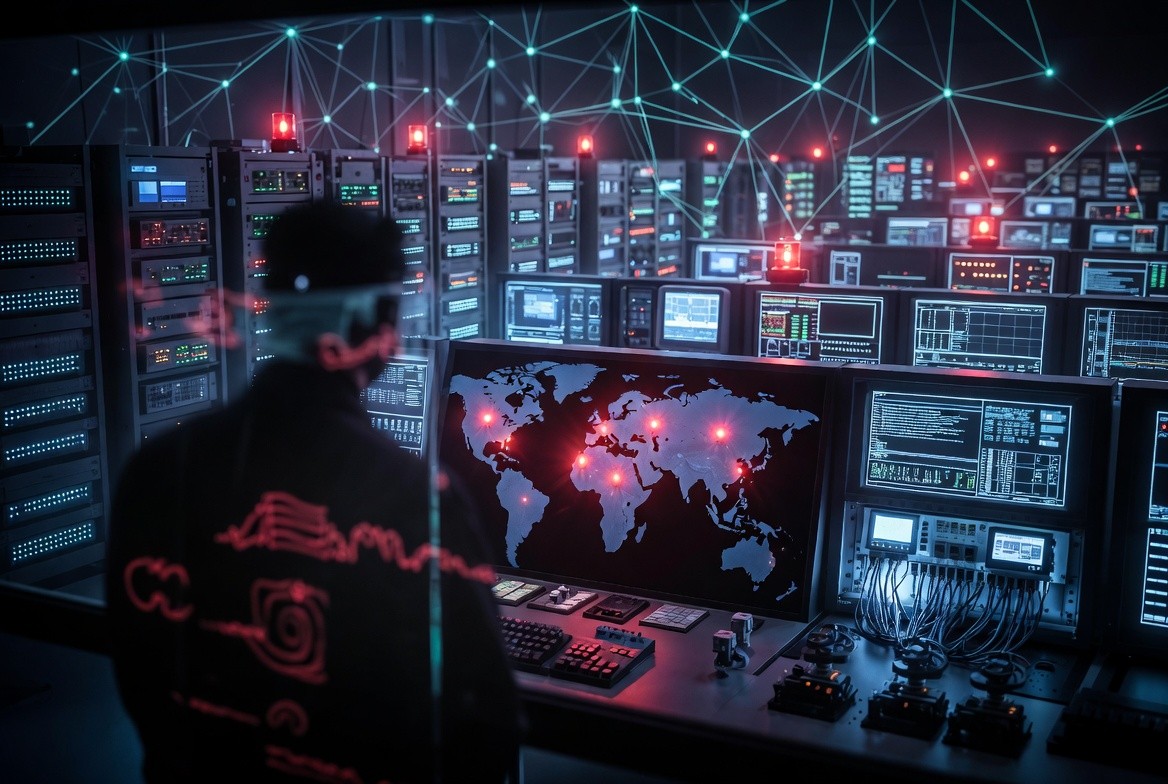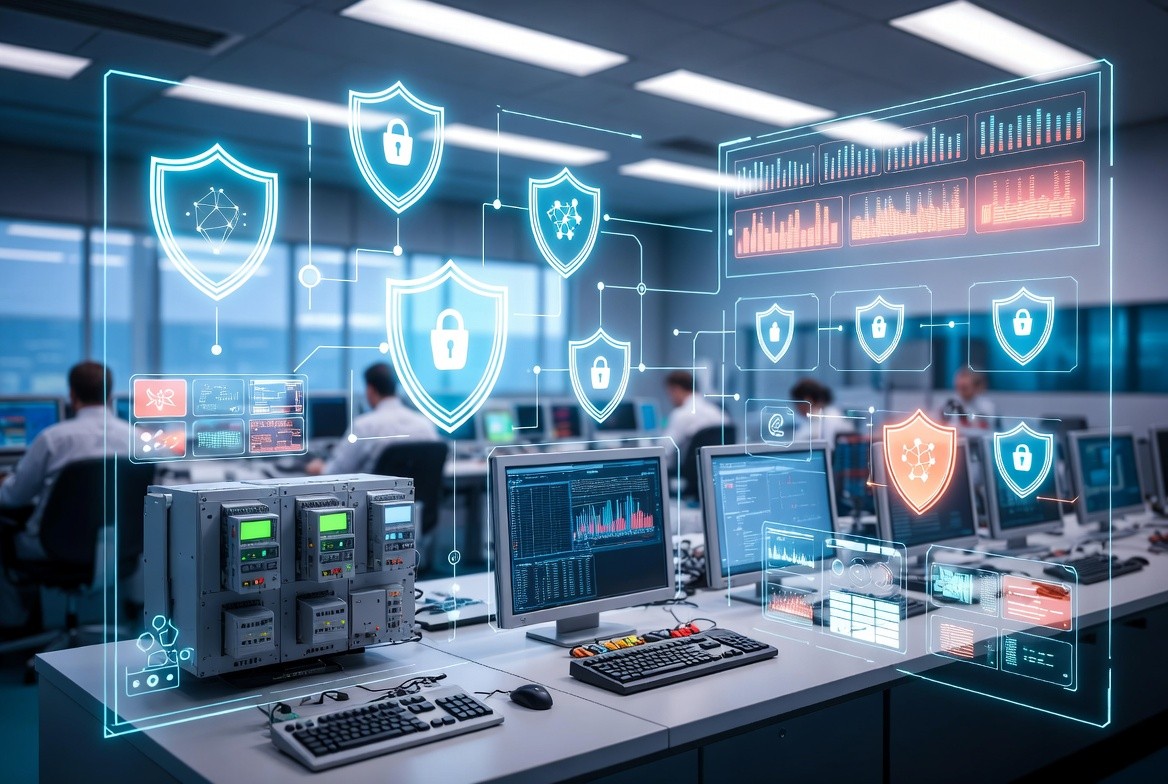

Prayukth KV
October 27, 2025
A guide to OT Security for the renewable energy sector
As part of the Cybersecurity Awareness Month, we are doing a deep dive into OT security strategy and measures for various critical infrastructure sectors. Today we will examine cybersecurity measures for the renewables sector.
Wind turbines, solar and geothermal farms and hydroelectric plants are no longer isolated mechanical systems that do not require custom security measures. Instead, they are vast, interconnected networks of smart devices, sensors, and industrial controls. By their inherent design and operational constraints, renewables present a unique set of challenges from a security standpoint. From remote locations with remote access for upgrades to a unique connectivity footprint for installations, putting together a unique security approach for the renewable energy infrastructure is a tough proposition. In today’s post we present an way forward for to address this challenge and to secure your infrastructure.
Before we start, do not forget to check out our previous blog post on “Managing third-party and vendor risk within your OT ecosystem” here.
How is OT security in the energy sector different?
In the context of renewables, a breach isn't just a data leak; it's a potential blackout, equipment destruction, or even a threat to public safety. Further, unlike OT in other sectors, OT in the energy sector as a whole consists of a mix of OEMs, remote facilities, complex operations and compliance mandates.
An overall security approach: From "air-Gap" fairy tales to real-world defense
As most of you know, for years, many OT environments relied on the premise of "air gap" for security. The idea that systems were safe because they weren't connected to the internet was a source of comfort and security inertia. That myth has since been exposed. Modern renewables rely heavily on remote monitoring, vendor access, and data analytics. A realistic security approach has to be proactive, sensitive to the unique challenges posed by the infrastructure and built on established frameworks.
Adopt a Framework: You don’t need to reinvent the wheel. Frameworks like the NIST Cybersecurity Framework (CSF) and the IEC 62443 series are the gold standard. You can adopt these on an as-is basis or add more layers to secure your infrastructure
NIST CSF: This provides a high-level, risk-based approach structured around core functions viz., Identify, Protect, Govern, Detect, Respond, and Recover. It helps you understand your assets, implement custom safeguards, find breaches, act on them, and restore operations. It essentially breaks down your security needs into manageable and trackable buckets
IEC 62443: The go-to standard for Industrial Automation and Control Systems (IACS). Its key concept of "Zones and Conduits" is perfect for renewables. It involves segmenting your network into logical zones (say a group of turbines, a solar inverter station) and securing the "conduits" (communication paths) between them. Further you can also launch a cybersecurity management plan, conduct OT security audits, gauge the level of security levels of employees, secure assets on a lifecycle basis and ensure complete asset visibility, security and management. Furthermore, you can use the IEC 62443 standard to measure your current cybersecurity level and identify the target level as well.
Embrace Zero Trust: The old "trust but verify" model is broken. A Zero Trust Architecture (ZTA) operates on the principle of "never trust, always verify." Each user, device, and connection must be authenticated and authorized every single time it tries to access a resource. Which means that trust has to be earned every time and there is no concept of inherent trust. This is critical for managing the complex web of vendors, technicians, and remote systems that can access your OT network.
Know your assets: The first step is a complete asset inventory for your OT assets. This means discovering and cataloging every PLC, inverter, sensor, and HMI on your network, understanding what it does, and how it communicates.
Know your vulnerabilities: This includes probable attack paths, patches that are pending for application and any network misconfigurations that could have led to a security gap.
Securing production as a whole
In an IT environment, if you detect a threat, you can simply quarantine a laptop and give the user another device to work with in the meantime. In an OT environment, you can't just "turn off" a wind farm or a power grid without creating production balancing issues. The primary mission of OT is availability, safety, and reliability. Security measures must support this mission, not hinder it.
Availability is everything: Security solutions must be "bump-in-the-wire" and avoid introducing latency that could disrupt real-time control processes. Patching is a classic example. You can't reboot a critical controller during peak demand. This requires careful planning, compensating controls (like virtual patching), and coordination between security and operations teams.
Safety first: A cyber-attack that manipulates PLC logic could over-speed a turbine, causing catastrophic physical failure. Security is, therefore, an integral part of the "safety" mission.
Legacy systems: Many renewable assets have 15-20 year lifecycles. This means you're often dealing with legacy equipment that was never designed for cybersecurity and can't be easily upgraded. Security strategies must accommodate these systems through network-level protections, such as segmentation and anomaly detection, rather than relying on endpoint security that won't run on the device itself.
Securing against complex threats and threat actors: The emerging threat landscape
As we have pointed out in our OT security threat landscape report, the attack surface for renewables is vast and growing. Every "smart" inverter, IoT-enabled weather sensor, and remote access portal could be a potential entry point for a complex and lasting attack. Attackers range from ransomware gangs to sophisticated nation-state actors seeking to disrupt critical infrastructure. Renewable energy sector attracts an even diverse set of threat actors.
Threats are no longer just generic malware. They are highly specific:
False Data Injection: An attacker doesn't steal data; they change it. Imagine feeding false sensor readings to a solar farm's control system, causing it to shut down on a sunny day or overload its inverters.
Denial of Service (DoS): An attacker floods your control network with junk traffic, making it impossible for operators to monitor or control assets. A 2017 research demonstration showed how a "wind turbine hack" could use DoS to take an entire wind farm offline.
Supply Chain Attacks: Malware can be embedded in a component like a new inverter or PLC before it's even installed at your facility.
Protocol Manipulation: Attackers who understand industrial protocols (like Modbus or DNP3) can send legitimate-looking commands that have malicious physical consequences.
Most of these threats come with a high degree of stealth and are known to stay hidden in renewable sector OT networks for years before striking.
Defending against these threats requires moving beyond simple firewalls and diodes. It demands deep visibility into your network traffic and the ability to understand the true intent of industrial commands.
Ensuring employee awareness
Your technology is usually only as strong as the people who use it. A single employee clicking a phishing email or plugging an infected USB drive into an engineering workstation can bypass millions of dollars in security controls.
Humans are often the weakest link, but they can also be your strongest asset.
OT-specific training: This isn't the same as IT security awareness. Staff need to understand the unique risks. A phishing email in an OT context isn't just aiming to steal a password; it's aiming to steal control of a physical process.
Go beyond Annual Training: A once-a-year presentation is not enough. Effective training is continuous and interactive. It should include:
Regular, simulated phishing campaigns.
Clear policies on removable media (USB drives). Go for a media scanning solution, if possible
Procedures for vendor and remote access.
A "no-blame" culture for reporting incidents immediately.
Role-based education: An operator in the control room needs different training than a field technician or an IT admin. Tailor the content to the role and the risks they face daily.
Turn them into incident response masters: So that they know exactly what needs to be done in case of an attack
Go for a decoy/spoof set-up
A decoy set-up could easily end up confusing the threat actor and deflecting a cyberattack. Such facilities also help renewable energy operators understand the motivations of threat actors and to sensitize their employees accordingly.
Get a SOC
A Security Operations Center can help you present a unified threat detection, remediation and learning platform for your renewable energy infrastructure.
· Helps retain knowledge through institutional memory
· Helps elevate security practices and level of security maturity
· Compliance becomes easier
· SOC helps streamline the availability and use of resources thereby improving your SecOps efficiency
Deploying NDR
Given the challenges of legacy systems, the need for complete availability, and the stealthy nature of modern threats, how do you discover an attack in progress or a rogue insider activity early? The answer is an OT-specific Network Detection and Response (NDR) solution such as Shieldworkz.
Here’s why NDR is essential for renewable OT:
Passive and safe: NDR tools such as Shieldworkz are passive. They "listen" to network traffic (often via a SPAN port or network TAP) without being "in-line." This means they can monitor your network with zero risk of disrupting operations or causing downtime.
Detects the unknown: While traditional systems look for known malware "signatures," NDR uses AI and machine learning to build a baseline of your network's normal behavior. It then alerts you to anomalies such as:
"Why is that solar inverter suddenly trying to connect to the internet?"
"Why is an engineer's laptop trying to scan the entire control network?"
"Why is a PLC receiving commands from an unauthorized device?"
Deep protocol visibility: A modern OT-aware NDR understands industrial protocols. It doesn't just see "traffic"; it sees "a command to change inverter setpoint" or "a request to stop turbine." This context is crucial for identifying malicious activity disguised as normal operations.
Accelerates incident response: When an alert fires, NDR provides a rich, forensic record of what happened, allowing your security team to understand the attack and contain it quickly before it creates more issues.
Shieldworkz NDR goes beyond protection it also offers complete asset visibility, decision making insights and complete compliance with multiple mandates and standards.
Securing the renewable energy sector is a complex but achievable goal. It requires a strategic shift away from outdated "air-gap" thinking toward a holistic approach that combines modern frameworks, a Zero Trust philosophy, robust employee training, and the deep visibility of advanced tools like NDR. By embedding security into our operations, we can ensure that the clean energy future is also a secure one.
Learn more about renewable energy security from our experts through a 30 minute session.
Interested in a demo of our NDR? Look no further.
More about our IEC 62443 compliance services
Get Weekly
Resources & News
You may also like
Dec 12, 2025
Critical alert: Pro-Russia hacktivists target global critical infrastructure through opportunistic attacks

Prayukth KV
Dec 11, 2025
A plant head’s Strategic guide to IEC 62443 vulnerability management

Prayukth KV
Dec 11, 2025
Securing-ot-telemetry-in-2026

Prayukth KV
Dec 9, 2025
Integrating IEC 62443 into OT security governance

Prayukth KV
Dec 8, 2025
NSA joins CISA, and others to offer guidance on integrating AI in Operational Technology

Prayukth KV
Dec 5, 2025
From IT to OT: Translating the New NIST CSF 2.0 Categories into Industrial Security Controls

Team Shieldworkz











